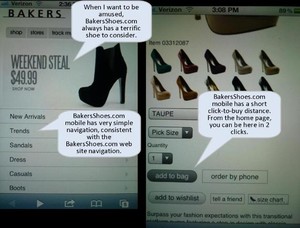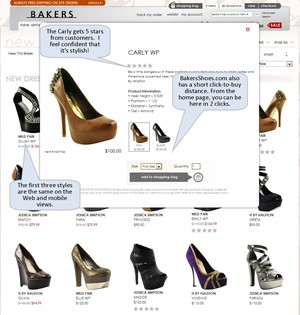Best Practices for Web Experience Management
How to Identify the Right Strategy, Plans, Tactics, and Metrics to Achieve Business and Customer Goals
Web experience management involves strategy, plans, tactics, practices, and metrics for all customer digital interactions. Our three best practices will deliver better customer relationships and improved business results. In this article, we present not only the best practices but also nine guiding principles for successfully applying the three practices.
NETTING IT OUT
Web experience encompasses all types of digital interactions, whether via PC, mobile phones, tablets, email, chat, messaging, and kiosks. Managing the web experience involves strategy, plans, tactics, practices, and metrics for customer journeys that may start and end far from the digital properties a marketer owns and controls. The value of effective web experience management is better customer experience, better customer relationships, improved business results, more control over the web experience, and more consistent brand representation.
Our best practices are reinforced with concepts and principles for applying them to your business. For web experience management, we have identified three best practices to learn and apply, listed here:
- Design Personalized Experience To Engage Customers and Support Your Business
- Provision Your Organization for Success
- Monitor and Optimize Your Plan
We support these best practices with nine principles that guide you in how to apply the best practices to your many and shifting situations.
(Click on images to enlarge.)
© 2011 Patricia Seybold Group Inc. and BakersShoes.com.
Illustration 1. BakersShoes.com has a consistent and streamlined experience that guides customers through selection and purchase.
THE VALUE OF WEB EXPERIENCE MANAGEMENT
What Is Web Experience Management?
Web experience encompasses all types of digital interactions. We are accustomed to thinking of web interactions as taking place at a desk, using a PC. But today’s web-supported interactions also support interactions via mobile phones, tablets, email, chat, messaging, and kiosks. The web experience with a brand may occur on that brand’s properties, or on neutral territory such as Google search, magazines, blogs, or Facebook. Managing the web experience involves strategy, plans, tactics, practices, and metrics. The purpose of web experience management is to optimize both the web experience and business results.
Value of Managing the Web Experience. Effective web experience management can deliver the following benefits:
- Better customer experience which is more efficient, engaging, and entertaining for the customer and more effective for your business
- Better customer relationships, resulting in greater commitment to your brand, and more frequent interaction
- Improved business results: increased revenue, increased profit, increased customer acquisition
- More control over the web experience, vital to marketing teams measured on results
- More consistent brand representation, both on- and off-property
Best Practices for Web Experience Management. Best practices are typically generic and either high level or extremely specific. This makes most best practice advice difficult to implement and also somewhat risky. Best practices are really general guidelines that need some custom fitting in order to be effective for any specific business. Therefore, we construct best practices that are reinforced with concepts and principles for applying them to your business. For web experience management, we have identified three best practices to learn and apply, listed here:
- Design Personalized Experience To Engage Customers and Support Your Business
- Provision Your Organization for Success
- Monitor and Optimize Your Plan
We support these best practices with nine principles that guide you in how to apply the best practices to your many and shifting situations.
BP#1: DESIGN PERSONALIZED EXPERIENCE TO ENGAGE CUSTOMERS AND SUPPORT YOUR BUSINESS
Three Principles for Designing the Right Customer Experience
To succeed in applying best practices to designing a personalized experience that guides customers and supports your business, you’ll need to apply these principles:
- Be your customers’ guide
- Help customers get everything they need
- Establish strategy and plans that meet both business goals and customer goals
Principle: Be Your Customers’ Guide
Each customer interacts with your company to satisfy a goal, and the goals vary for each interaction. The most common ecommerce goals are as follows:
- Research what’s on offer to satisfy my need
- Compare and consider alternatives
- Buy
- Find out about returns and/or repairs
- Learn how to use a product
- Check status of current orders
- Review past purchases
You will be more successful with your customers—and make them more successful—if you help your customers rather than interrupt and deflect them from reaching their goals. That’s pretty obvious, isn’t it? Well, it is obvious as a theory, but the practice is complicated. It may be difficult to discern from a customer’s path just which goal he seeks. And even when it is clear, your own goals—revenue, profit, acquisition, retention—may distract you from your role as guide. But it is worth figuring out how to do it: according to ...
Sign in to download the full article
0 comments
Be the first one to comment.





